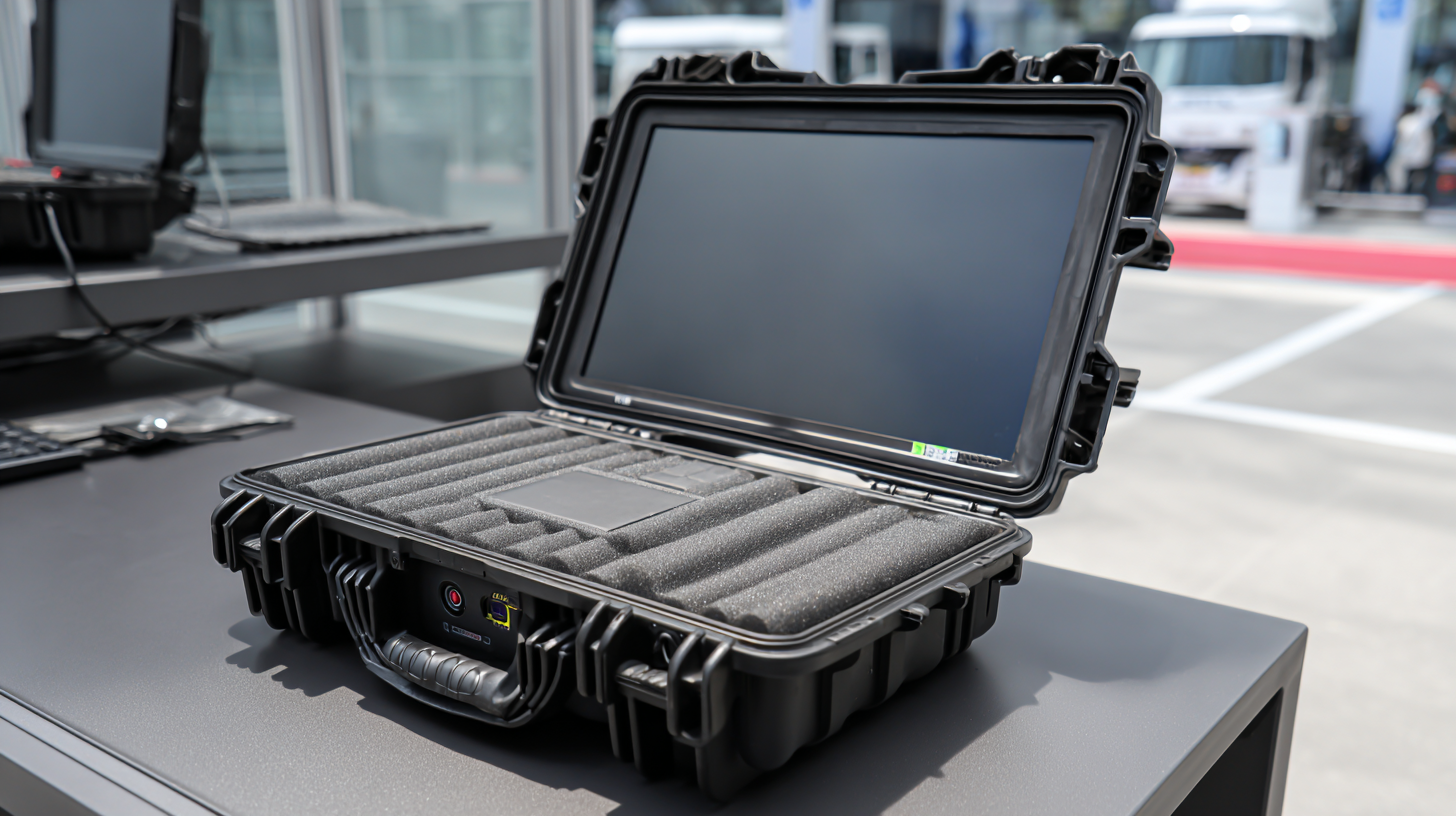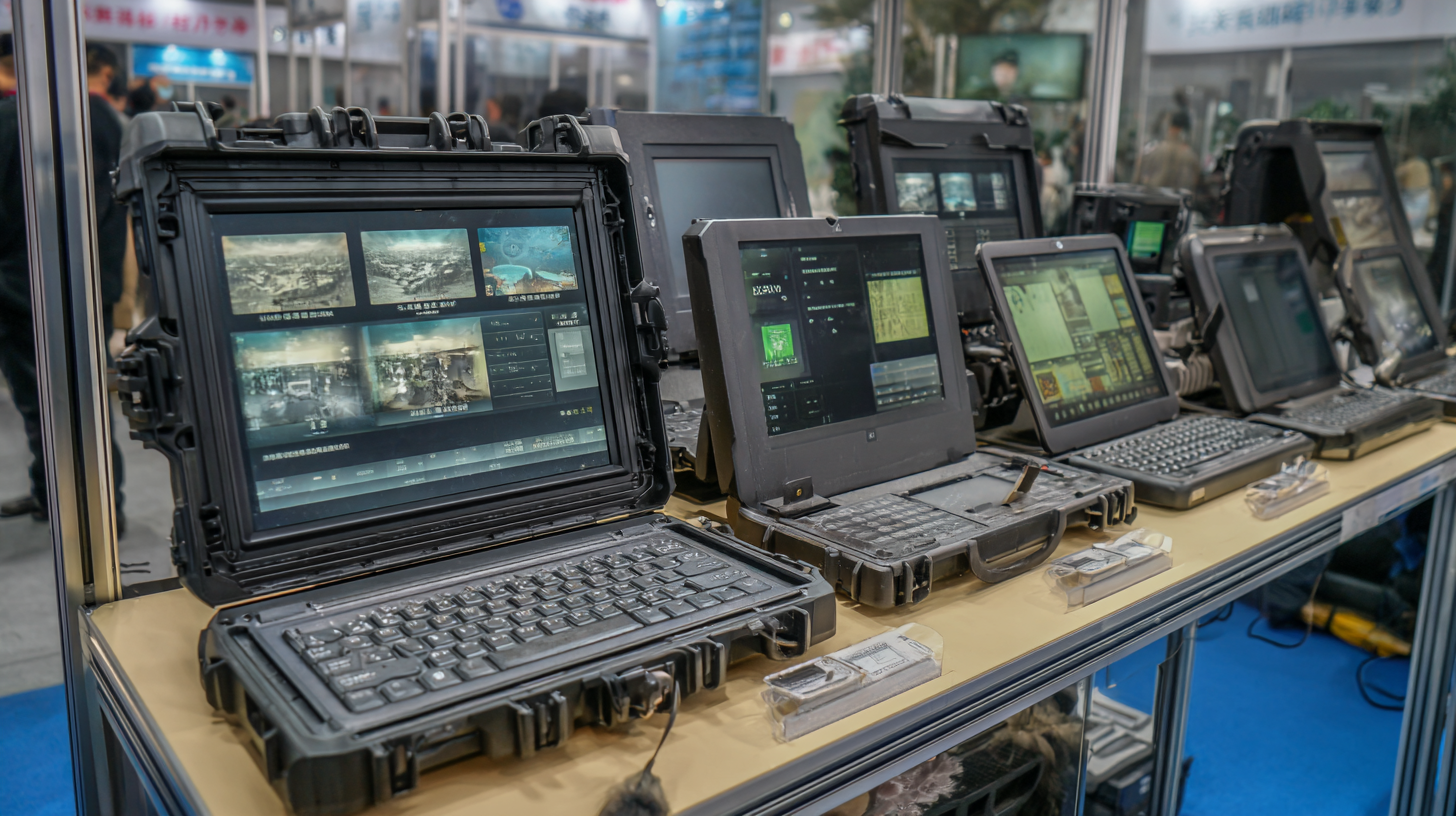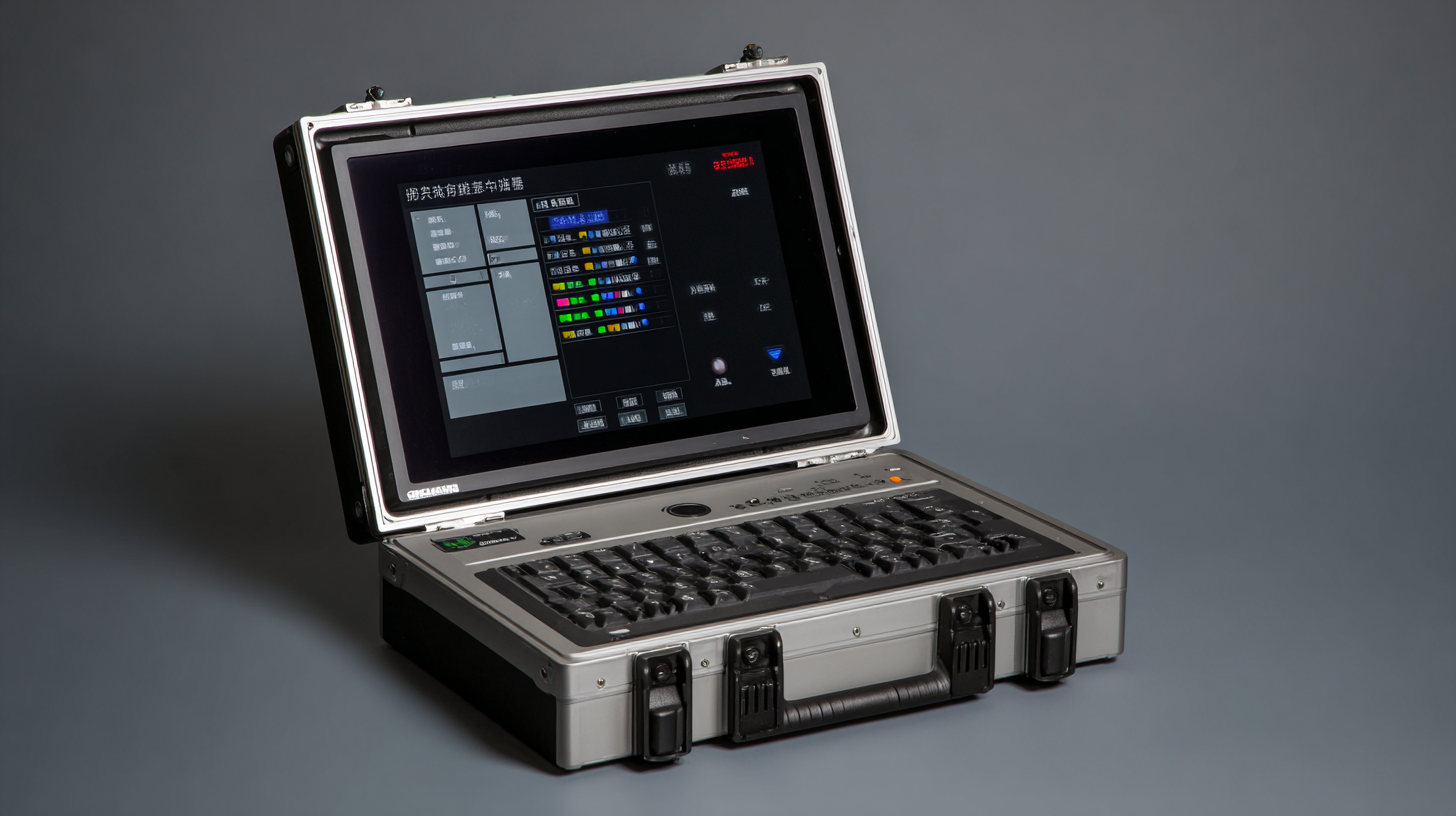Exploring Industrial Portable Computer Innovations at the 2025 China Import and Export Fair
The rapid evolution of technology has ushered in a new era for industrial portable computers, revolutionizing the way industries operate. As highlighted in the latest report by ResearchAndMarkets, the global industrial portable computer market is expected to grow significantly, reaching approximately $3.8 billion by 2025, driven by increasing demand for mobility and ruggedness in various sectors such as manufacturing, logistics, and field services.

The 2025 China Import and Export Fair, also known as the 138th Canton Fair, serves as a pivotal platform for showcasing groundbreaking innovations in this field. With more companies investing in portable computing solutions that withstand challenging environments, the fair is set to unveil cutting-edge products that promise enhanced efficiency and productivity. This introduction to the future of industrial portable computers not only emphasizes the importance of innovation but also the critical role these devices play in shaping the future of industries worldwide.
Emerging Trends in Industrial Portable Computer Technologies at the Fair
At the 2025 China Import and Export Fair, industrial portable computer technologies are set to showcase remarkable innovations, driven by the demand for enhanced mobility and efficiency in various sectors. According to a recent report by MarketsandMarkets, the global market for portable industrial computers is projected to reach USD 2.5 billion by 2026, growing at a compound annual growth rate (CAGR) of 8.4%. This growth is largely influenced by the rising adoption of IoT and AI in industrial applications, which necessitates advanced computing solutions in field operations.
One of the emerging trends highlighted at the fair will be the development of ruggedized devices designed to withstand harsh environments. Manufacturers are increasingly focusing on creating portable computers that offer high durability and performance in extreme conditions, catering specifically to industries such as manufacturing, construction, and logistics. A report by ResearchAndMarkets emphasizes that the rugged mobile computing segment alone is expected to grow at a CAGR of 10.2% during the forecast period, illustrating the critical role these innovations play in enhancing productivity and safety in industrial settings. Additionally, features like extended battery life and enhanced connectivity options are becoming standard, allowing for seamless operations even in remote areas.
Key Players Showcasing Innovations in Portable Computing Solutions
The 2025 China Import and Export Fair is poised to be a pivotal event for the portable computing sector, showcasing the latest innovations from key players in the industry. Exhibitors are expected to present cutting-edge portable computers that blend performance with versatility, addressing the increasing demand for mobile solutions across various sectors. According to a recent industry report by MarketsandMarkets, the global portable computer market is projected to grow from $68.4 billion in 2023 to $101.6 billion by 2028, reflecting a compound annual growth rate (CAGR) of 8.3%. This growth is driven by the rising need for mobile technology in industries such as healthcare, logistics, and manufacturing.

At the fair, manufacturers will unveil advancements in battery technology, screen durability, and ergonomic design, enhancing user experience and functionality. Key players, including Lenovo, Dell, and HP, are expected to highlight their latest models that incorporate AI capabilities and enhanced connectivity options, catering to the evolving demands of remote and on-site work. An analysis by ResearchAndMarkets indicates that the integration of AI features in portable computing devices could boost productivity by up to 40% over the next five years, illustrating the significant impact of innovation in this space. The 2025 China Import and Export Fair will undoubtedly serve as a crucial platform for these industry leaders to demonstrate their commitment to advancing portable computing solutions.
Impact of Portable Computers on Industrial Efficiency and Productivity
The advancements in portable computer technology are significantly reshaping industrial efficiency and productivity. According to a report from MarketsandMarkets, the global portable computer market is projected to grow from USD 25 billion in 2022 to USD 38 billion by 2027, highlighting a compound annual growth rate (CAGR) of 8.8%. This surge is driven by the increasing demand for mobility and real-time data access in various industrial sectors. As businesses integrate portable computing devices into their operations, they enhance their ability to respond swiftly to market changes and operational challenges.
The impact of portable computers on productivity is evident in numerous case studies. A survey conducted by IDC found that companies leveraging mobile computing solutions have experienced productivity gains of up to 30%. Portable devices facilitate streamlined communication and data sharing among employees, which reduces downtime and enhances collaboration. Furthermore, industries such as manufacturing and logistics report improved workflow efficiency due to the real-time data collection capabilities of portable computers, reducing errors and enhancing decision-making processes. As the 2025 China Import and Export Fair showcases these innovations, it's clear that portable computing is becoming a crucial component in the quest for optimized industrial operations.

Future Outlook: The Evolution of Industrial Computing Post-2025
The evolution of industrial computing post-2025 is poised to be shaped by innovative technologies that enhance efficiency, connectivity, and adaptability in various sectors. With the rapid advancement of AI, IoT, and edge computing, we predict that industrial portable computers will become more integrated into smart manufacturing and real-time monitoring systems. These devices will not only provide data processing capabilities on the go but will also facilitate seamless communication between machines and human operators, leading to more agile production lines.
Moreover, the trend towards sustainability and energy efficiency will likely drive the development of these portable systems. Future models may incorporate eco-friendly materials and energy-efficient components, catering to a growing demand for greener technologies. The adaptability of industrial portable computers will further support the diversification of applications across industries such as healthcare, logistics, and construction, unlocking new opportunities for innovation and operational excellence. As industries embrace these advancements, the landscape of industrial computing will undoubtedly transform, paving the way for a more connected and efficient future.
Innovations in Industrial Portable Computers (2025 Outlook)
Case Studies: Successful Implementations of Portable Computers in Industry
As industries continue to evolve and embrace digital transformation, the implementation of portable computers has emerged as a game changer. According to a recent report from MarketsandMarkets, the global industrial portable computer market is projected to reach $7.3 billion by 2026, growing at a CAGR of 7.5% from 2021. This growth is attributed to the increasing demand for mobility and efficiency in various sectors, from manufacturing to logistics.
Case studies highlight the successful integration of portable computers in industry settings, showcasing their impact on operational efficiency. For instance, a leading automotive manufacturer implemented portable computing solutions that enhanced their production line monitoring capabilities. This not only reduced downtime by 20% but also improved inventory management accuracy by 15%, leading to a significant reduction in operational costs. Furthermore, in the logistics sector, companies have adopted rugged portable devices that allow real-time tracking of shipments, resulting in a 30% increase in delivery accuracy, as reported by the Logistics Management Association. These successful implementations underscore the value of portable computers in driving productivity and innovation across industries.
Exploring Industrial Portable Computer Innovations at the 2025 China Import and Export Fair
| Industry Sector | Application | Benefits Realized | Implementation Year |
|---|---|---|---|
| Manufacturing | Real-time quality control | Increased efficiency by 30% | 2023 |
| Logistics | Inventory management | Reduced errors by 25% | 2024 |
| Construction | Project management | Improved communication | 2025 |
| Healthcare | Patient monitoring | Enhanced patient care | 2023 |
Related Posts
-

Unlocking the Advantages of Military Panel PCs for Modern Defense Solutions
-

Understanding the Benefits of Ruggedized PCs in Harsh Environments
-

Essential Checklist for Selecting the Best Industrial Rugged PC for Your Needs
-

How to Choose the Right Military Panel PC for Your Operational Needs
-

Ultimate Guide to Choosing the Right Rugged Panel PC for Your Business Needs
-

How to Choose the Right Military Panel PC for Your Operations

